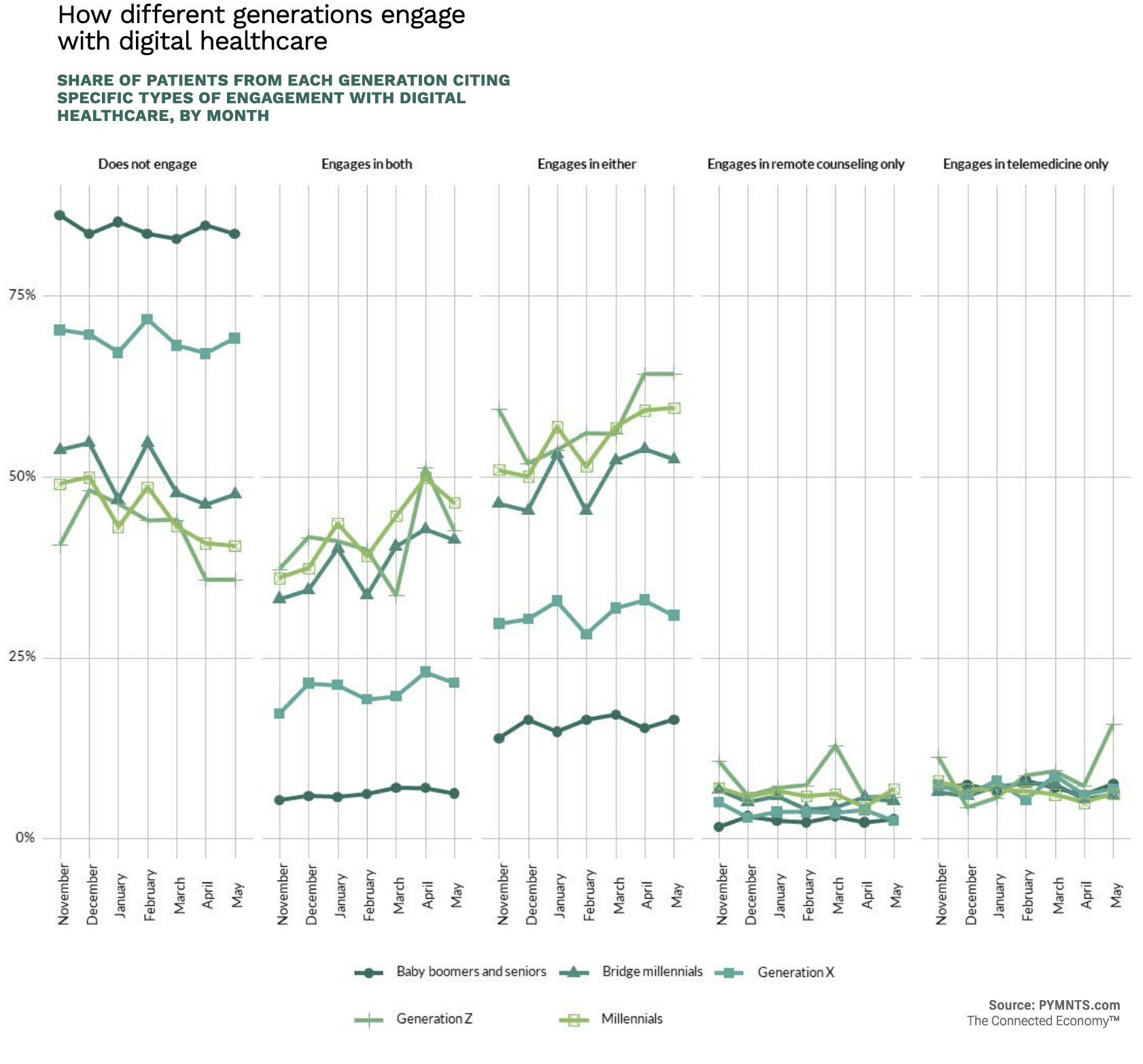Portion of US Patients Using Digital Healthcare Hits 38% in May

Thirty-eight percent of U.S. patients now use digital healthcare options to receive remote counseling, telemedicine or both, according to “The ConnectedEconomy™: The Trend Toward Digital Healthcare,” a PYMNTS and CareCredit collaboration.
Get the report: The ConnectedEconomy™: The Trend Toward Digital Healthcare
The share of patients using these services varies by generation and by the sort of healthcare. The age groups most likely to use digital healthcare services are the younger three generations: bridge millennials, millennials and Generation Z.
The age group least likely to use these services is the oldest one — baby boomers and seniors — with 84% of the patients in this age group saying they do not use digital healthcare.
Generation Z is the most likely of all generations to use only telemedicine appointments, with 16% doing so. This compares to 6% of millennials and bridge millennials who do the same.
However, when it comes to remote counseling, it’s millennials who use it most, with 7% of millennials respondents saying they use only this digital service. The share of patients using one or more digital healthcare options has increased from 34% in November 2021 to 38% in May 2022.
The share of patients not using remote healthcare services of any kind has simultaneously decreased, falling from 66% in November 2021 to 62% in May 2022.
The demand for online healthcare extends to both mental and physical health as well, but when given the option to use both, many patients take it.
In May 2022, 26% of patients sought out both telemedicine and remote counseling services, 8% used telemedicine options exclusively and 4% used remote counseling exclusively.
 Consumers are increasingly prioritizing their health, seeking out more in-person and remote healthcare services alike.
Consumers are increasingly prioritizing their health, seeking out more in-person and remote healthcare services alike.
Offering patients digital healthcare options such as telemedicine and remote counseling grants them greater flexibility, allowing them to choose the care that they prefer — whether that is in a physician’s office or from the comfort of their living rooms.
